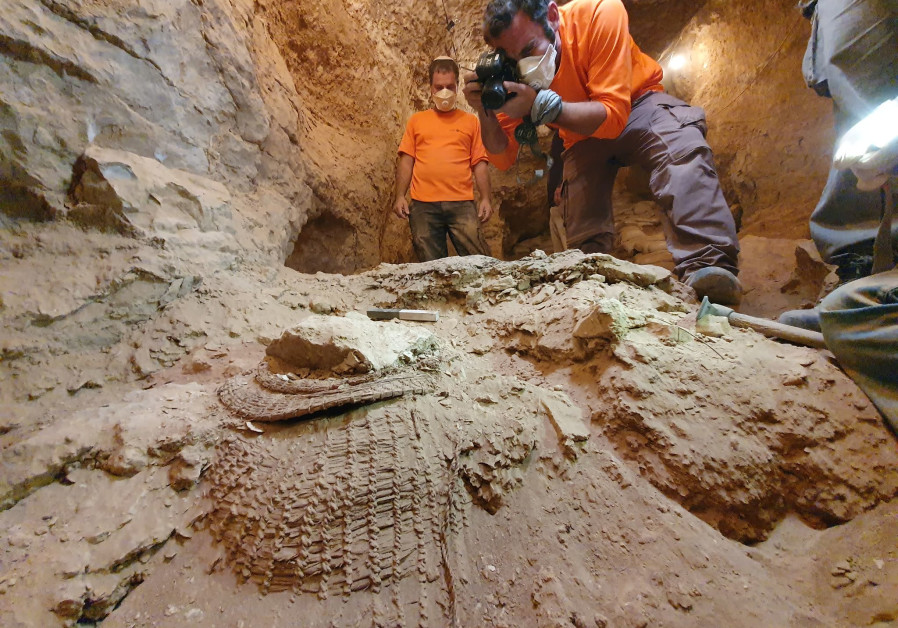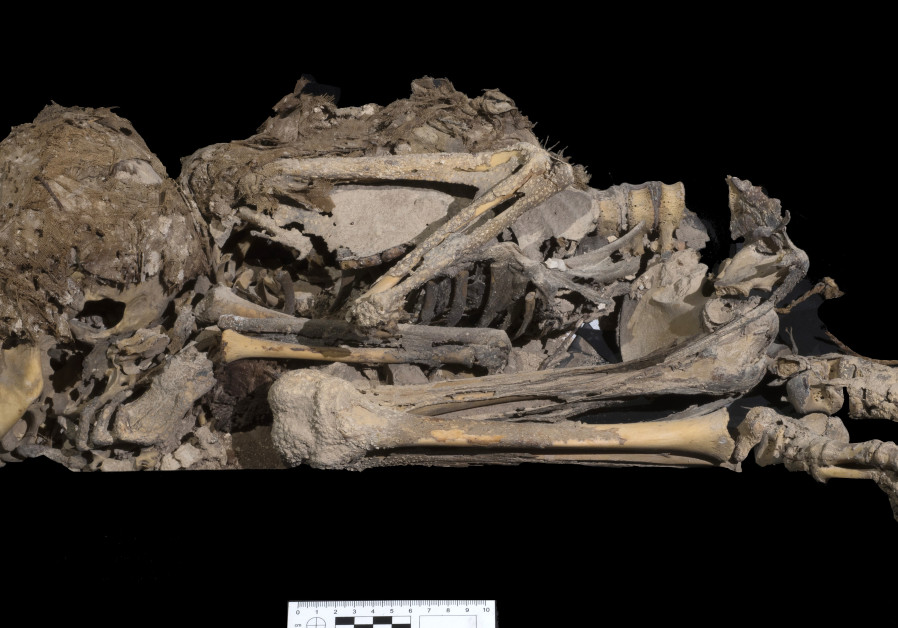 Biblical manuscripts dating back 2,000 years discovered in Israel
Biblical manuscripts dating back 2,000 years discovered in Israel
ROSSELLA TERCATIN
2,000-year-old biblical manuscripts discovered in Judean Desert cave in Israel • First discovery of this kind since Dead Sea Scrolls.

A 2,000 year old biblical scroll was unearthed in the Judean desert, the Israel Antiquities Authority announced Tuesday. The groundbreaking discovery marks the first time that such an artifact is uncovered in decades, since the time of the Dead Sea Scrolls.
The fragments were found in a cave in the Judean Desert, as a result of a several-year-long operation with the purpose of surveying all the caves of the area carried out by the IAA in cooperation with Staff Officer of the Archaeology Department of the Civil Administration in Judea and Samaria, and funded by the Ministry of Jerusalem Affairs and Heritage.
The excavation of the caves was conducted in difficult conditions Photo: Yoli Schwartz, Israel Antiquities Authority
“These are the things you are to do: Speak the truth to one another, render true and perfect justice in your gates. And do not contrive evil against one another, and do not love perjury, because all those are things that I hate—declares the Lord,” one of the fragments reads, featuring an excerpt of the biblical book of Zecharia.
The scroll was written in Greek, but God’s name appears in paleo-Hebrew. It contains passages from the Minor Prophets, including Nahum.
“The aim of this national initiative is to rescue these rare and important heritage assets from the robbers’ clutches,” IAA director Israel Hasson said in a press release. “The newly discovered scroll fragments are a wakeup call to the state. Resources must be allocated for the completion of this historically important operation. We must ensure that we recover all the data that has not yet been discovered in the caves, before the robbers do. Some things are beyond value.”
The cave, known as “the Cave of Horror” in the Judean Desert reserve’s Nahal Hever, stands some 80 meters below the cliff top and can be accessed only by clinging to ropes.
of Horror. Photo: Eitan Klein, Israel Antiquities Authority
First discovery of this kind since the Dead Sea Scrolls
“This is definitely an exciting moment, as we present and reveal to the public an important and significant piece in the history and culture of the Land of Israel,” Hananya Hizmi, Head Staff Officer of the Archaeology Department of the Civil Administration in Judea and Samaria. “In as early as the late 1940s, we became aware of the cultural heritage remains of the ancient population of the Land of Israel with the first discoveries of the Dead Sea Scrolls. Now, in this national operation, which continues the work of previous projects, new finds and evidence have been discovered and unearthed that shed even more light on the different periods and cultures of the region. The finds attest to a rich, diverse and complex way of life, as well as to the harsh climatic conditions that prevailed in the region hundreds and thousands of years ago.”

Besides for the manuscript, the cave harbored several other unique findings, including a trove of coins from the time of the Bar Kochba Revolt, the skeleton of a child dating back to some 6,000 years, and a 10,000 year old exceptionally preserved basket which experts say might be the earliest item of this kind ever uncovered.
A rare cache from the Bar Kokhba period. Photo: Dafna Gazit, Israel Antiquities Authority
The skeleton, which probably belonged to a child aged 6-12, was wrapped into a cloth and mummified.

“On moving two flat stones, we discovered a shallow pit intentionally dug beneath them, containing a skeleton of a child placed in a fetal position,” IAA prehistorian Ronit Lupu explained. “It was obvious that whoever buried the child had wrapped him up and pushed the edges of the cloth beneath him, just as a parent covers his child in a blanket. A small bundle of cloth was clutched in the child’s hands. The child’s skeleton and the cloth wrapping were remarkably well preserved and because of the climatic conditions in the cave, a process of natural mummification had taken place; the skin, tendons, and even the hair were partially preserved, despite the passage of time.”
Zawartość publikowanych artykułów i materiałów nie reprezentuje poglądów ani opinii Reunion’68,
ani też webmastera Blogu Reunion’68, chyba ze jest to wyraźnie zaznaczone.
Twoje uwagi, linki, własne artykuły lub wiadomości prześlij na adres:
webmaster@reunion68.com
